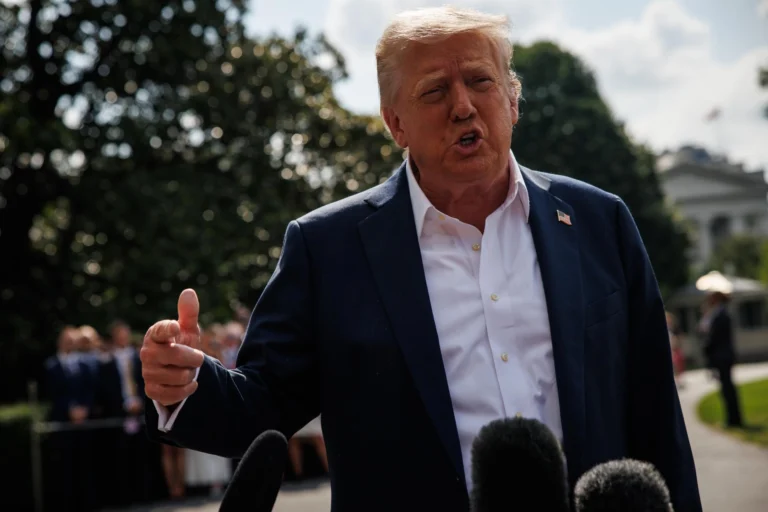Critical 30% Tariff Threat: Trump Targets EU and Mexico Amid Global Economic Warnings

Washington (United States), 11/07/2025.- US President Donald Trump responds to questions from reporters after walking out of the South Portico of the White House to board Marine One on the South Lawn, in Washington, DC, USA, 12 July 2025. President Trump and First Lady are heading to Kerrville, Texas, to meet with local officials and first responders after a deadly flash flood a week ago killed at least 120 people with at least 160 people still missing. EFE/EPA/SAMUEL CORUM / POOL
July 12, 2025 Hour: 1:07 pm
Trump imposes 30% tariffs on EU and Mexico, triggering global concerns over trade wars and economic fallout. Read the full analysis on the Trump 30% tariffs and their geopolitical impact.
Geopolitical Context Behind Trump’s Tariff Move
The imposition of Trump 30% tariffs on the European Union and Mexico marks a significant escalation in U.S. trade policy under President Donald Trump. This move comes amid heightened protectionist rhetoric and follows a pattern of unilateral trade actions that have previously targeted China and Canada. Analysts warn it could destabilize global supply chains and provoke retaliatory measures, especially from key U.S. allies.
The timing is politically sensitive, as it precedes the 2026 midterm elections and occurs during a period of increased domestic pressure over inflation and drug-related deaths linked to fentanyl imports. The decision also reflects Trump’s broader strategy of leveraging tariffs as tools for diplomatic negotiation rather than purely economic instruments.
Trump Announces 30% Tariffs Against EU and Mexico
Washington, July 12, 2025 — U.S. President Donald Trump announced this Saturday the implementation of 30% tariffs on goods imported from the European Union and Mexico, effective August 1. In official letters addressed to European Commission President Ursula von der Leyen and Mexican Head of Government Claudia Sheinbaum, Trump justified the move by citing persistent trade imbalances and Mexico’s role in the fentanyl crisis.
“These tariffs are necessary to protect American workers and families,” Trump stated, framing the action as part of his “America First” agenda. The announcement has triggered widespread concern among economists and international leaders about potential economic repercussions.
🔗 El País – U.S. Tariff Threat Against Mexico
Conditions and Warnings in Official Letters
In his letter to the EU, Trump demanded “complete and open access to the U.S. market without any tariffs” as a condition for reconsidering the 30% tax. He also encouraged European companies to relocate manufacturing operations to the United States, offering expedited approval processes for such moves.
He warned that goods attempting to bypass the tariffs via third countries would still be subject to them, stating, “if you raise your tariffs, we will add to ours.”
Regarding Mexico, Trump accused the country of failing to stop fentanyl trafficking, which he claims has caused thousands of American deaths. However, recent data shows record seizures and joint efforts between the two nations to combat drug cartels.
🔗 France 24 – Trump Tariff Announcement
Economic Impact and International Reactions
Experts caution that the Trump 30% tariffs could severely disrupt major industries across Europe, particularly automotive manufacturing — where German brands hold significant market share — along with pharmaceuticals, machinery, and agricultural exports like wine and cheese.
In Mexico, a critical partner under the USMCA (T-MEC) agreement, the tariffs threaten to increase consumer prices and disrupt regional supply chains. Analysts warn that both economies may suffer, including U.S. consumers who rely on affordable imports.
The European Commission has rejected the move and reaffirmed its willingness to negotiate, while the Mexican government reiterated its commitment to anti-drug cooperation and called for dialogue.
The Trump 30% tariffs come at a time of growing global economic uncertainty. They follow earlier protectionist policies targeting Canadian steel and Chinese tech, and reflect a broader shift toward aggressive bilateral bargaining. While the administration frames the tariffs as defensive, critics argue they risk damaging long-standing alliances and undermining multilateral trade frameworks.
The move also echoes similar tactics used during Trump’s first term, raising fears of a new wave of trade wars just as markets begin to stabilize after years of pandemic and inflation shocks.
Conclusion: A Rising Trade War Risk
The Trump 30% tariffs on the EU and Mexico represent a sharp escalation in U.S. trade policy, with potentially far-reaching consequences. While the administration argues these measures aim to correct unfair trade practices and curb fentanyl flows, many experts warn of unintended economic costs and retaliatory cycles that could spiral into a broader trade conflict.
As global leaders weigh their responses, the world watches closely to see whether diplomacy can prevent further escalation — or if the Trump 30% tariffs mark the beginning of a new era of economic nationalism.
Author: JMVR
Source: Agencias - Europa Press - EuroNews

